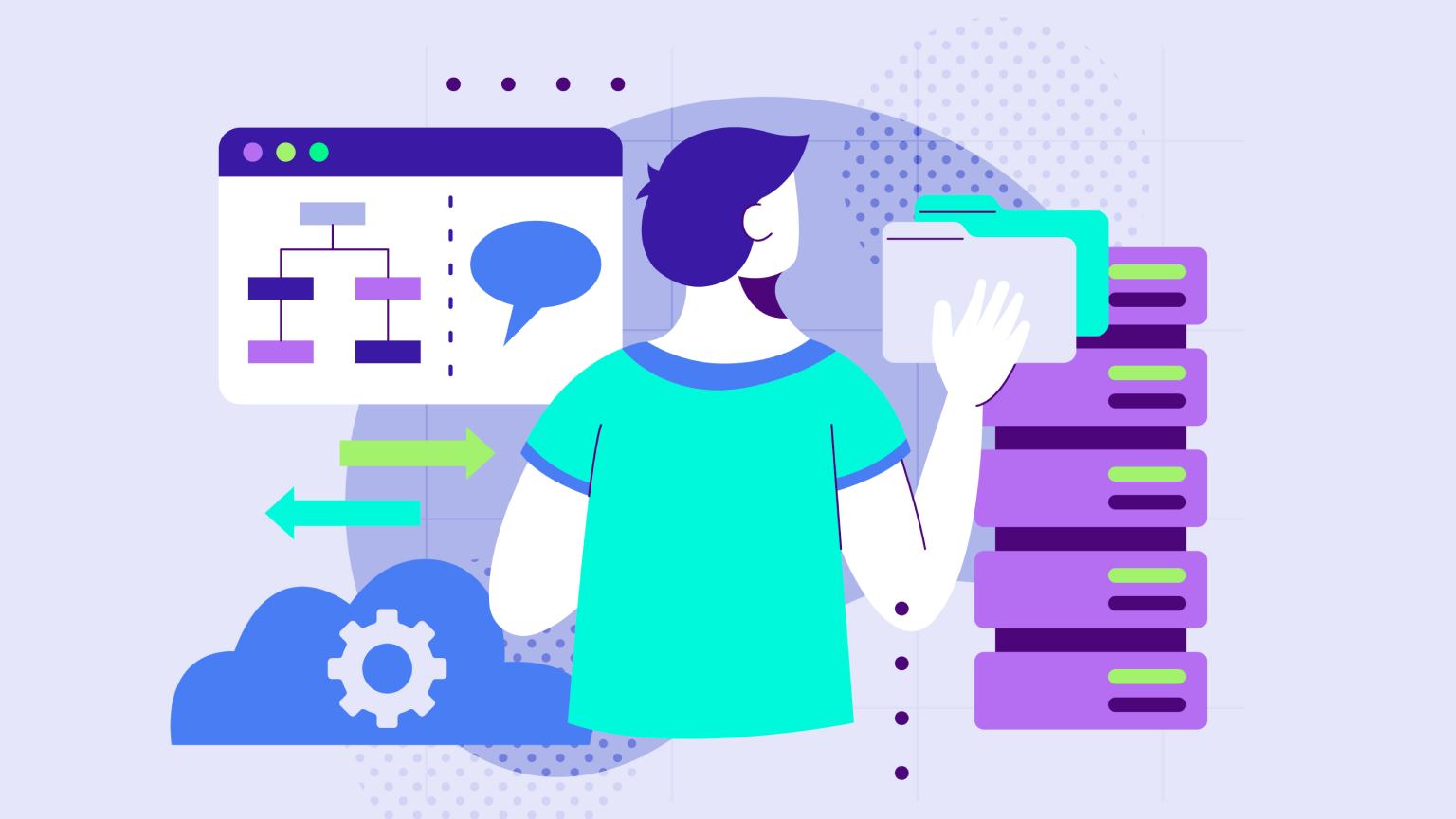In today's fast-paced business world, managing team members and ensuring they have the right tools at their fingertips is more critical than ever. That's where SaaS user management comes into play, truly transforming how teams operate and collaborate. As a cloud-based solution, these user management platforms offer greater convenience and better scalability than their traditional software counterparts. By centralizing access control, businesses can streamline workflows, improve productivity, and seamlessly manage access to various applications and services. Join me as we explore the world of SaaS user management and uncover its benefits, best practices, and key features to empower your team for success.

Software as a Service (SaaS) user management has gained significant traction as businesses continue to shift from traditional on-premise software to cloud-based solutions. This section will explore the essence of SaaS user management, its various benefits for teams, and how integrating user management software can consolidate team operations, strengthening productivity and security along the way.
SaaS user management refers to the system of managing user access, roles, and permissions for various applications and services within a cloud-based ecosystem. This approach is a departure from traditional user management systems that relied on in-house servers and IT infrastructure, often proving to be less flexible and scalable. SaaS user management tools, on the other hand, offer centralized control, easy access, and seamless user provisioning, providing a more efficient and agile user management experience.
There are numerous advantages to adopting SaaS user management tools for business teams. Firstly, they improve overall efficiency by streamlining user onboarding and access management. This enables IT administrators to easily handle role assignments, manage permissions, and monitor user activities across various cloud applications in real-time. Centralized control is another significant benefit, as it enables admins to grant or revoke access, apply security policies, and update user details without having to log into multiple systems. Moreover, SaaS user management systems offer better security by supporting advanced access control features like multi-factor authentication and single sign-on, thereby reducing the risk of unauthorized access and data breaches.
Incorporating user management software into a team's workflow enhances coordination and collaboration. By offering a unified interface for managing user access and data across different applications, these systems simplify administrative tasks and ensure consistent enforcement of security policies. Additionally, they automate time-consuming manual processes such as account provisioning and deprovisioning, freeing up IT teams to focus on more critical tasks. As a result, SaaS user management tools are instrumental in building an efficient and secure environment where resources are allocated optimally, roles are managed effectively, and team operations are consolidated seamlessly.

In this section, I'll explore some best practices for implementing an effective SaaS user provisioning process. By incorporating these practices into your user management platform, you'll not only reduce administrative burdens but also improve user experience during the critical onboarding stage. Let's dive into the details.
To increase efficiency and accuracy in your SaaS user provisioning process, consider automating user access. Automated provisioning allows you to seamlessly grant or revoke access to applications and services based on predefined roles and permissions. In turn, this automation reduces the risk of human error and saves your team valuable time, promoting a smoother SaaS user onboarding experience.
Security and compliance should be top priorities in your user management platform. Implementing robust policies that govern user access, such as least privilege and separation of duties, can help reduce risk and ensure ongoing compliance with industry standards or regulations. Be mindful of your responsibility toward safeguarding sensitive data and system integrity as you manage access to various applications and services within your organization.
Streamlining the SaaS user provisioning process can significantly reduce administrative workloads while enhancing the user onboarding experience. Some key steps to streamlining include standardizing roles and permissions, integrating with existing identity management systems, and setting up clear approval workflows. By adopting these best practices, you'll create a more efficient and user-friendly process that frees up resources and empowers your team to focus on more strategic tasks.
In summary, adopting best practices for SaaS user provisioning can lead to increased efficiency, improved security and compliance, and an enhanced onboarding experience for new users. By implementing these practices in your user management platform, you'll set your team up for success in the ever-evolving world of cloud-based software and services.
When it comes to selecting the best user management software for your team, identifying the key features that set effective SaaS user management tools apart from the rest is crucial. In this section, we'll explore the indispensable functionalities that are fundamental to a robust user management system, helping you better evaluate and choose the right solution to meet your specific team needs.
One essential feature to look for in user management software is single sign-on (SSO). SSO streamlines the login process for team members by allowing them to access multiple applications and services with a single set of credentials. This not only enhances user experience but also reduces password fatigue and the potential for security breaches.
Another key feature to consider when evaluating SaaS user management tools is multi-factor authentication (MFA). MFA adds an extra layer of security by requiring users to present two or more separate forms of identification before gaining access to sensitive information or systems. By adopting MFA, organizations can significantly reduce the risk of unauthorized access or data breaches.
Real-time access control is another vital functionality that you should look for in a user management system. This feature allows administrators to grant, modify, or revoke user access to applications and services instantly, ensuring that team members have the appropriate permissions based on their role and responsibilities. Real-time access control makes it easy to keep up with changes in team composition or user roles, maintaining a high level of security and operational efficiency.
Lastly, user activity monitoring is an indispensable feature of effective user management software. By keeping track of user actions, administrators can quickly identify suspicious or unauthorized activities and take prompt action to mitigate potential risks. User activity monitoring also helps organizations maintain compliance with industry regulations by providing an audit trail of user actions and system access.
In conclusion, the key features that set effective SaaS user management tools apart from the rest include single sign-on, multi-factor authentication, real-time access control, and user activity monitoring. By understanding and prioritizing these functionalities, you'll be better equipped to select the best user management software that meets your team's specific needs and requirements.

Welcome to the final section of our exploration on SaaS user management. In this part, we will focus on understanding the intricacies of SaaS user onboarding and its importance in offering a seamless experience for new users. Let's delve into how we can create effective onboarding workflows, track user progress, provide support, and ultimately reduce time-to-productivity with the right strategies in place.
The first crucial step to improve user onboarding is designing seamless workflows that guide new users through the necessary processes. By devising clear and concise steps, we can ensure that every individual quickly grasps all aspects of the user management platform without any hassle. Implementing interactive guides, tooltips, and context-specific help can drastically enhance user comprehension without overwhelming them with too much information all at once.
A key factor in successful onboarding lies in monitoring user progress and offering tailored assistance. By analyzing the new user's interaction with the application, we can identify potential friction points and address them promptly. It also enables us to provide personalized support, helping users navigate any challenges they might face. This not only builds trust but also fosters a strong relationship between users and the platform, reinforcing the ease of SaaS user onboarding.
Ultimately, a streamlined onboarding experience can drastically reduce the time-to-productivity for new users. By making the onboarding process engaging, educational, and efficient, we effectively diminish the lag time between user registration and their ability to comfortably use the platform. The end result is a team that fully reaps the benefits of their user management platform sooner and maximizes the return on investment.
Real estate SaaS solutions for smart management
Explore top SaaS framework solutions for growth.
Mastering B2C SaaS: strategies for success
Traditional user management systems typically require on-site installation, updates, and maintenance, while SaaS user management platforms are cloud-based, allowing for real-time updates, scalability, and remote access. SaaS user management tools offer more convenience and improved efficiency compared to traditional systems.
SaaS user management tools centralized control over team members' roles, permissions, and access to applications, improving workflows and eliminating the need for manual provisioning and deprovisioning. This reduces administrative burdens, increases security, and streamlines team operations.
Effective SaaS user management tools should offer features like single sign-on (SSO) for seamless access, multi-factor authentication (MFA) for improved security, real-time access control for greater transparency and user activity monitoring to track team members' progress and usage of applications.
Automating user provisioning processes enhances efficiency and accuracy by reducing manual tasks, ensuring security and compliance, and allowing for the quick onboarding of new users. Automated processes also help administrators keep track of team members' roles and permissions in a centralized manner, further increasing efficiency.
A smooth and effective onboarding process ensures that new team members quickly get up to speed and start using their assigned tools and resources productively. This includes creating seamless onboarding workflows, tracking progress, providing support, and ultimately reducing time-to-productivity. Proper onboarding can significantly improve the overall user experience, leading to higher team satisfaction and retention rates.
Passionate writer who loves diving into diverse subjects. Through my engaging content, I aim to inspire and captivate readers.
Suggested Articles
